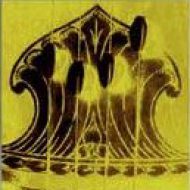12 positions are available in the South Indian 72 mela system. To learn more, read the following explanations. Source © Ludwig Pesch | Creative Commons License >> A scale – mēla in Carnatic or thāt in Hindustani music – isn’t a raga yet: it is no more than an imaginary arrangement of notes for the …
Category archives: Resources
Why Carnatic Music Matters More Than Ever
by Ludwig Pesch For this musicologist and author, there are good reasons to believe that Carnatic music matters, perhaps more than ever and almost anywhere in the world. So why not perform and teach it in the service of better education for all, for ecological awareness or in order to promote mutual respect in spite …
Continue reading “Why Carnatic Music Matters More Than Ever”
Voice culture and singing
Full screen viewing and download link: https://archive.org/details/voice-culture-and-singing-kalakshetra-quarterly-1983 Voice Culture and Singing by Friedrich Brueckner-Rueggeberg Peter Calatin (left) and Friedrich Brueckner-Rueggeberg (centre) with students atKalakshetra in 1983 © Ludwig Pesch This course material was originally produced for – and used by – teachers and students at Kalakshetra College of Fine Arts, today known as Rukmini Devi College Of …
